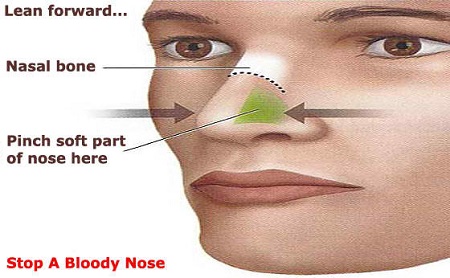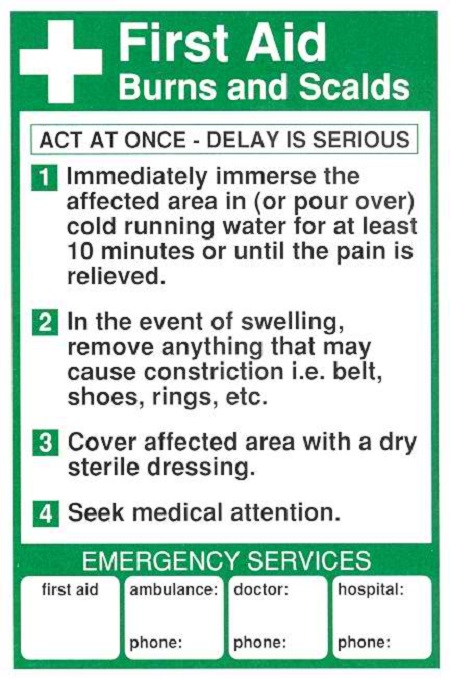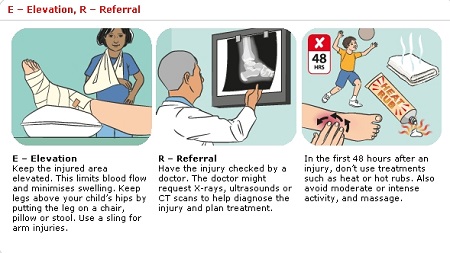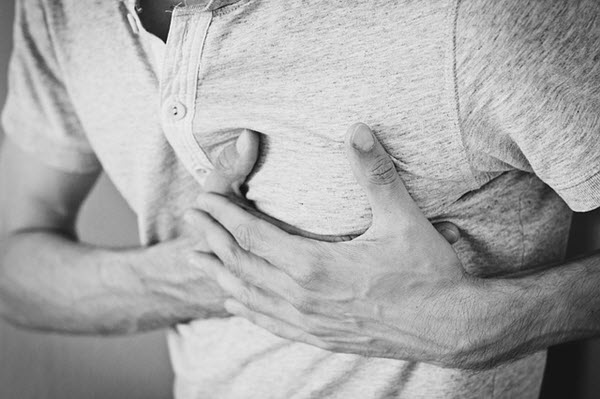Funny Quote About Checking Blood Pressure
It is vital for nurses to know what to do when faced with an emergency. For instance, we should all know what to do with a victim of a road accident or someone with an injury as simple as a burnt finger.
These cases happen every day, and most of the time, nurses are expected to provide first aid care. We should learn not only how to stay as calm as possible, but also what to do while waiting for help to arrive.
1 Back to Basics

Keep DRS in mind: Danger (check the scene for danger), Response (check for the victim's consciousness) and Send someone to call for help. Make sure to survey the scene before doing anything. Before helping a victim, ensure your safety first and then ask someone to call 911. If you are alone, shout for help, perform first aid, and then find someone to call 911. Also, remember the ABCDs in giving first aid: Check the victim's Airway, Breathing, perform CPR (if necessary)/ Control major bleeding and Defibrillate, if available (and if necessary). Is the victim's airway (mouth and throat) free from foreign objects that may cause blockage? Is the victim breathing? Does the victim have severe bleeding? The three P's must also be kept in mind when giving first aid. These are the responsibilities of every first aider: To Preserve life and give initial emergency care and treatment to people who are sick or injured, to Protect unresponsive/ unconscious people, to Prevent the condition of the victim to worsen and to Promote the victim's recovery. See Also: Top 10 First Aid Facts and Fallacies
2 Bleeding Wounds

Via foodstorageandbeyond.com
Cuts and scrapes need proper care to avoid infection or complications. The first things you should do are to clean the wound and stop the bleeding. Puncture wounds, cuts, scrapes or amputations may cause external bleeding that needs immediate medical attention. If you can stop, or at least lessen, the bleeding until help arrives (Call 911), the patient's chances of surviving may increase tremendously.
3 Nosebleed

Nosebleeds are very common, and are usually caused by dryness, allergies, infection, increased blood pressure and aggressive nose picking among others. Bleeding from the nose for more than twenty (20) minutes may be considered a medical emergency and immediate medical attention is necessary.
4 Choking

There are two types of airway obstruction, one of which is the partial airway obstruction wherein the breathing is labored or noisy and some air may be felt from the mouth. The other type is the complete airway obstruction wherein no air can be felt escaping the mouth.
5 Unconsciousness

6 Shock

When the organs and tissues in a person's body are not receiving enough flow of blood, that person is susceptible to shock.
7 Head Trauma

A head trauma may cause a temporary loss or altered level of consciousness which occurs after an impact to the skull area. The victim may also experience blurred vision, nausea, and confusion.
8 Burns

There are three C's in managing most types of burns:
9 Poisoning

Via preparednessmama.com
10 Bee/Wasp/Hornet Stings

You can scrape the stinger out with a credit card or finger nail. Note: In many cases no stinger will be present. Only bees leave their stingers. Wasps, yellow jackets, and hornets do not. Source: www.childrenscolorado.org
Insect stings usually cause pain and swelling. Stings may be considered an emergency, especially if the victim experiences an allergic reaction.
11 Cardiac Arrest

Via American Heart Association.
A person can still be revived during a cardiac arrest, but the more time that passes, the more unlikely that the victim will be revived. See Also: Top 10 Heart Attack Symptoms You Might Ignore
12 Heatstroke

As the most severe form of heat-induced illness, heatstroke should be taken seriously. It is a very life-threatening condition that results in extremely high body temperature, thus causing many organ systems to fail.
13 Animal Bites

To treat a minor bite, first wash your hands thoroughly with soap to avoid infection. Wash hands afterwards as well. If the bite is not bleeding severely, wash the wound thoroughly with mild soap and running water for 3 to 5 minutes. Then cover the bite with antibiotic ointment and a clean dressing.
Around 10 to 20 people, mostly children, die from dog bites every year. Dog bites are usually ragged and torn in appearance. Cat bites, on the other hand, involve deep puncture wounds that, most of the time, become infected. Cats don't normally bite though, unless they are restrained or when you attempt to intervene in a cat fight. Domestic animals like horses, pigs and cows, do not bite often, but when they do, serious wounds may result.
14 Near Drowning

Near drowning is when a person suffers from severe oxygen deprivation while submerged in water, but not resulting in death. Otherwise, the term used is drowning. When a person suffers near drowning, water may enter the lungs, causing them to cease transferring oxygen to the blood.
15 Eye Injuries

First aid for children.
The eyes are well-protected from injury by the structure of our face and with the help of our eyelids. Nonetheless, injuries are still possible, some to the extent that vision is lost, or, in rare cases, the eye must be surgically removed.
16 Asthma Attack

There are many factors that may trigger an asthma attack. Upper Respiratory Tract Infection, stress, pollen, molds and changes in air temperature are only a few. Asthma attacks are characterized by difficulty of breathing and speaking, shortness of breath, cyanosis and wheezing.
17 Fractures

The most important focus in managing fractures is to stop any bleeding. Fractures may cause pain at the injury site, bleeding, deformities, tenderness, swelling and, often, inability to move.

18 Spinal Injury

You have to assume that a person has a spinal injury if there is an evidence of head injury. This may result to unresponsiveness, headache, nausea and vomiting, paralysis or convulsions.
19 Drug Overdose

Whether it's accidental or intentional misuse, a drug overdose requires immediate medical attention. Its signs and symptoms depend on a wide range of factors. In general, however, the general symptoms you may observe include: If you suspect someone has taken an overdose, try to remain calm and call an ambulance on 000. If the patient is unconscious but shows signs of breathing, carefully place him on his side. Tilt his head back and lift the chin to ensure that the airway remains open. Avoid making the patient vomit or ask him to eat or drink. If you see any pill container in the area, take it to the hospital. See also: Drugs & Their Antidotes: A Nurse's Ultimate Guide
20 Hypothermia

Hypothermia is considered a medical emergency. It happens when the body loses heat faster than it's able to produce heat, resulting in dangerously low body temperature. If not treated right away, it can cause confusion, coma, and even death. If the patient is exposed to a really cold temperature outside, get the patient indoors. Remove any wet clothing as needed and help the patient dry off. Make sure to warm his trunk first and not his hands or feet. Doing that can cause shock. Avoid immersing the patient in warm water as rapid warming can produce heart arrhythmia. If the patient isn't breathing, start performing CPR immediately while waiting for emergency help to arrive.
21 Chest Pain

There are several causes of chest pain. It can vary from indigestion to heart attack and pulmonary embolism. To help someone experiencing chest pain, assist him in a comfortable position. Assess and monitor his breathing and responsiveness. If the pain doesn't go away, it's best to take the patient to the hospital. Also, you need to instruct the patient not to drink or eat anything. Do not give him another patient's medication unless prescribed by a doctor. Never leave the patient alone. Sources:
mcdougaldshimpay2001.blogspot.com
Source: https://www.nursebuff.com/first-aid-guide-for-nurses/
0 Response to "Funny Quote About Checking Blood Pressure"
Post a Comment